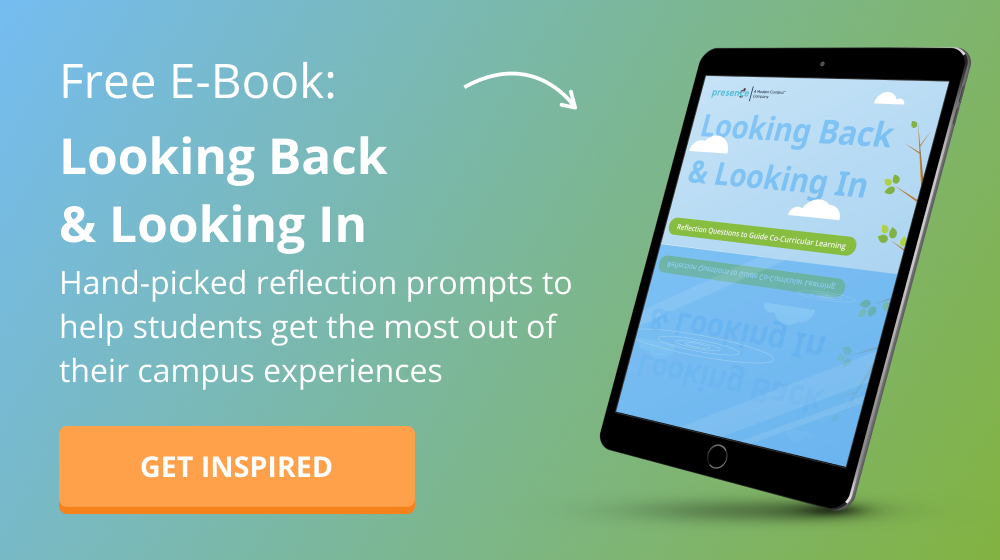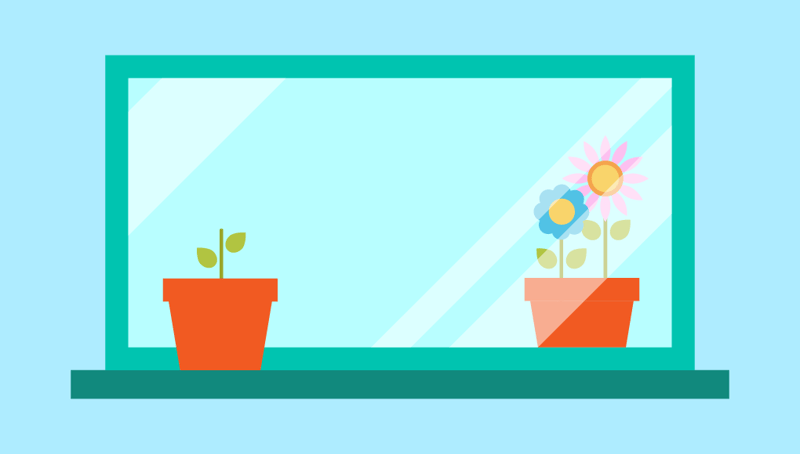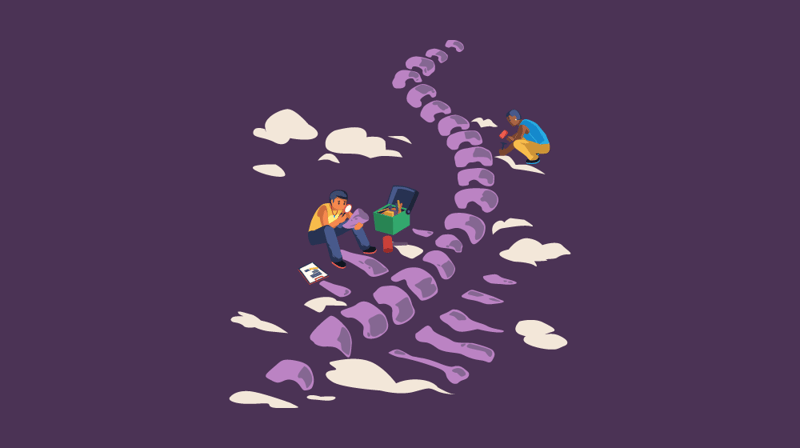Reflection is often slapped on to campus programming at the very last minute.
Perhaps you have the standard one or two questions you ask students to respond to at the end of discussion-based events. Or maybe, upon noticing that your program time will be up in two minutes, you quickly ask for a student volunteer to summarize what everyone has collectively learned.
Those strategies are both a decent start, but they don’t pay full due to the importance of reflection. Reflection isn’t just a nice-to-have process; it’s a critical part of the learning cycle!
Perhaps you learned about modern educational theorist David Kolb and his experiential learning cycle in grad school. To refresh your memory, Dr. Kolb asserts that effective learning involves a four-step process: experiencing, reflecting, thinking, and acting — in that order.
Each step can essentially be boiled down to four simple questions:
- concrete experience: what happened?
- reflective observation: what did I experience?
- idea development: why did this happen?
- active experimentation: what do I do next?
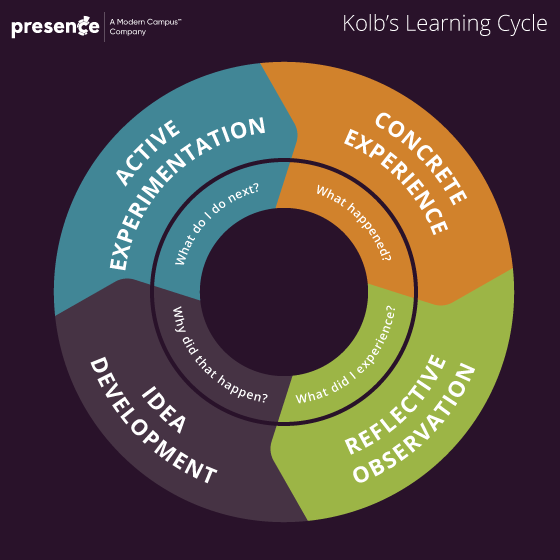
So, after you guide students through a concrete experience (or empower them to take one of their own), reflection is crucial to solidifying their learning and making the experience part of their wider, ongoing development journey.
In this post, I’ll talk you through additional benefits of reflection — for individual students, for the student affairs professionals planning each program, and even for the institution as a whole. Then, I’ll review reflection methods to hopefully help you remember that reflection doesn’t have to just be one question tacked on to the end of programming; it can be so much more dynamic and ongoing than that!
All told, I hope that this post will inspire you to make reflection your friend — a trusty, rewarding process that you’ll be pumped (and unintimidated) to guide students through every time.
The Benefits of Reflection
Students can better understand their own development
Self-reflection allows students to see how they’ve gotten from point A to point B. In doing, they’ll not only feel proud of their growth but they’ll also gain insight into what learning styles and processes work best for them.
Students can better articulate their skills to employers
Having impressive skills is actually not-so-impressive if students can’t articulate their qualifications when it matters most. Fortunately, self-reflection gives students training in doing exactly that. Through continuous reflection (especially verbal group exercises), students will be able to name, define, and elaborate on their skills.
Plus, they’ll also learn how to share their development journeys, connecting lines on their resumes to the job description. For example, a student who’s engaged in reflection through their time as an orientation leader should be able to explain how that leadership role helped shape them as an outstanding team player or boosted their communication skills.
Students will understand the value of co-curricular learning
Reflection can help students see that they got more out of an event than free pizza. They can understand that your program didn’t needlessly take away from their precious study time; rather, they gained invaluable skills that will help them excel inside the classroom!
Understanding the value of learning outside the walls of an academic building should keep students coming back for more. After all, co-curricular opportunities are helping to improve their workforce readiness — which the great majority of students say is a primary motivator for their decision to pursue a degree in the first place.
Students can develop the habit of self-reflection and apply to their academics & career
As my grandma always used to say “An apple a day keeps the doctor away, and a reflection a week keeps you at your peak.”
Fine, ok, she never said that. But much like apple-eating makes for a healthy habit with potential long-term benefits, so does reflection.
Getting into the habit of reflection after learning can translate to the classroom and the workplace. Self-reflection activities in campus programming might inspire students to reflect on their study routines, test-taking skills, and writing habits. And a 2014 study by Harvard Business School faculty found that reflecting on one’s work improves job performance!
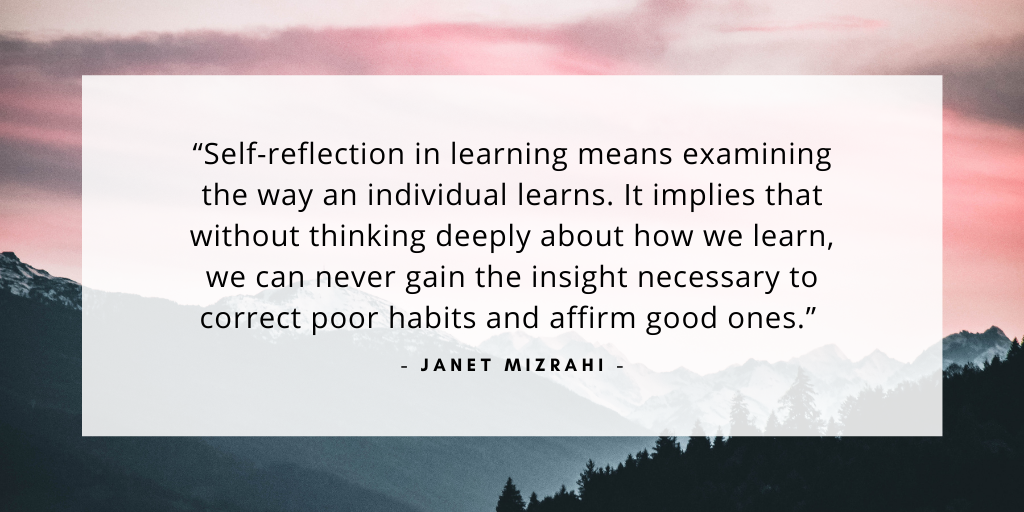
Students can engage with each other
Group or partnered reflection exercises provide students with unique opportunities to engage with one another about the learning process. They’ll likely be challenged (appropriately) to reexamine their own conclusions or have their opinions further solidified. And perhaps most valuably, they’ll break outside of their set perspectives, informed by their background and identities, to encounter the perspectives of peers with different experiences and social lenses.
Thus, reflection becomes both a social exercise that supports peer connections and one that promotes an understanding of diverse viewpoints.
You can tell the story/value of your work
By analyzing reflection forms or observing reflection activities, student affairs professionals gain insight into how their programs — both individual and as a whole — promote student development. That data can then become a powerful storytelling tool, used to showcase the value of various student affairs departments and initiatives to institutional higher-ups.
You can improve your programming
Reflections can allow you to see when your learning goals are not being met — perhaps even how certain elements of your programs are misaligned for your target goals.
You might also discover mixed results, with many students having great learning outcomes and others being left behind. In that case, you can investigate how your programs aren’t reaching or supporting certain student demographics or learning styles.
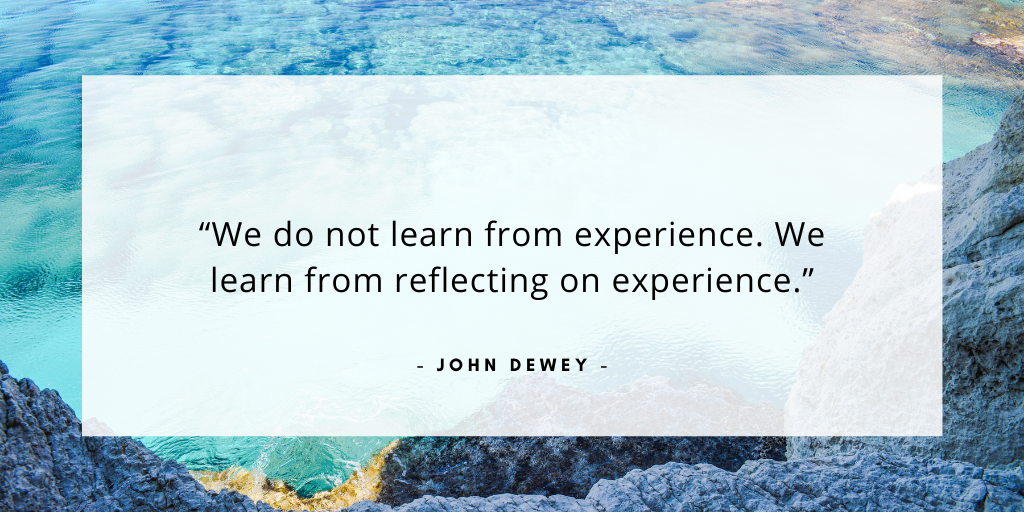
You can further guide students
Reflections can serve as metaphorical location checks; you can see where students are (and how they got there) in order to guide them to the next ideal stops in their co-curricular journeys.
In other words, you can design interconnected programming that builds upon prior student learning.
Reflection Methods
Discussions
This is perhaps the most obvious reflection method. But that doesn’t negate its value. Discussions give students practice in verbally articulating their development, which is an important skill in and of itself for employment interviews.
Additionally, whether discussions are conducted as part of a large group, breakout group, or between two partners, this reflection method can help boost students’ social development and culture awareness. Students will be challenged to add their voices (and listen to others) within a community filled with diverse perspectives and opinions.
Individual interviews
By sharing their reflections with a professional staff member or student leader, students will mimic the job interview experience. They’ll need to think about their learning journey and present it in a way that someone else — who may or may not have been present for the program or long-term experience — can understand.
Individual interviews may also allow for more follow-up questions than group discussions, which should prompt the student to further investigate their developmental process through a more critical lens.
Logs, journals, or blogs
Reflection methods that task students with articulating their development in writing can, well, help improve their writing skills. Students may think more carefully above each and every word choice, more so than they would verbally.
Additionally, students who may not be comfortable with sharing their stories out loud, or who simply prefer to listen, may be more expressive in writing. They can rightfully brag or admit faults, which they may otherwise shy away from in front of their peers.
Plus, by keeping a weekly log, daily journey, or monthly blog, students will have recordings that they can refer back to. They can use their records to brainstorm new goals, work through expressed challenges, and — perhaps best of all — realize their amazing progress, no matter how long the journey took.

Activities
Reflection activities, such as the ones suggested by DePaul University and the University of Vermont, add structural elements to the reflection process. They can not only add an element of fun to reflection, but also encourage talkative students to spend more time listening and quiet students to speak out.
Consider why you might opt for a structured icebreaker or teambuilding activity at a social event, rather than just telling students to mingle with one another. Reflection activities should similarly tempt you; utilizing tools like inspirational quotes, visualizations, speeches, and role-playing can encourage students to open up and consider perspectives from new angles.
Forms
Forms guide students to reflect on their learning experiences via prompted questions, which may require them to write out full sentences, bullet point ideas, and/or rank their learning on Likert scales
With Presence’s customizable forms builder, student affairs professionals are ingraining forms into campus-wide culture. By sending forms to students each time they check into events (in person or online), no matter which department or office each event is hosted by, students will develop ironclad reflection habits over time.
You can even make reflection a requirement of program attendance by only crediting students with attendance once they’ve submitted their reflection form. And with advanced conditional logic, you can design a single form to cover multiple programs, saving you time and presenting students with only the questions that apply to them — no more, no less.
What’s more, once a form is approved (by whomever you set it to be approved by), the related learning experience will appear on the student’s involvement record. That means you can integrate reflection into set pathways that incentivize engagement and help students boast about their workplace-ready skills via SmartTranscripts.
Sold on reflections yet? Hopefully! Now, you just need to come up with pointed questions to guide students’ reflections.
Unsure of where to start? Well, we’d like to help you out with that too! We’ve created a nifty (and 100% free) cheat sheet with dozens of targeted reflection questions — organized by categories like leadership programs, community service, student organization meetings, conduct meetings, teambuilding exercises, and more. You can download it right now, below.
